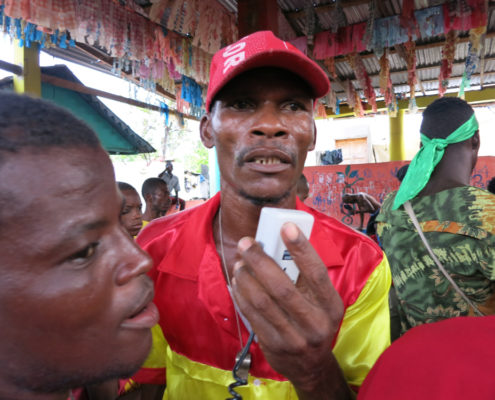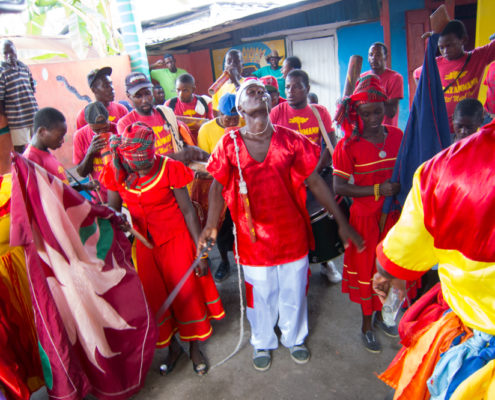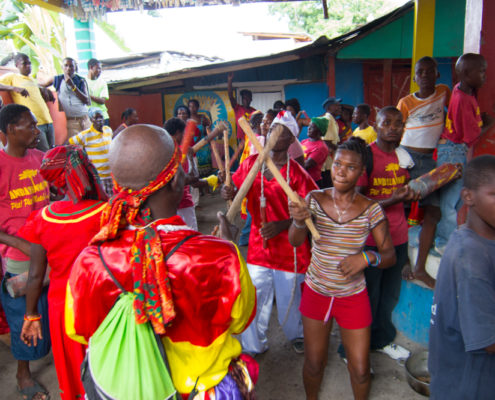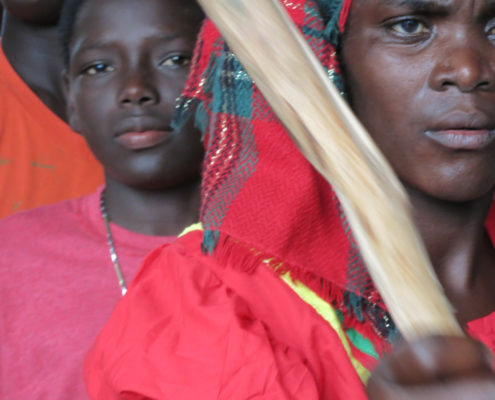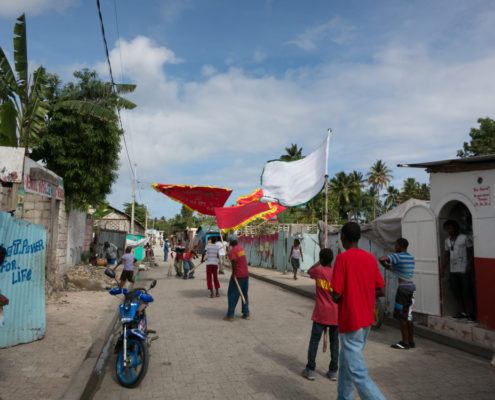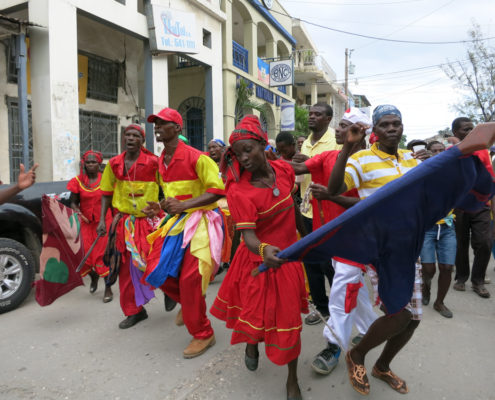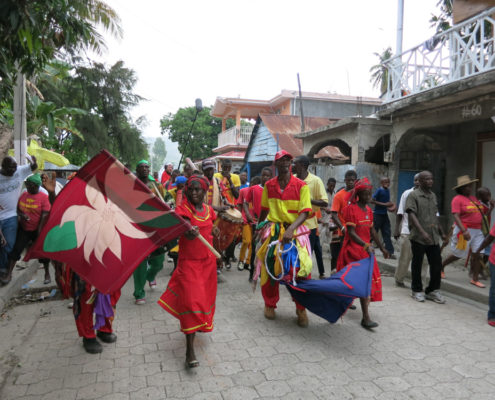Marie Suze Jean Baptiste, mambo at the legendary Jacmel peristil, or vodou temple, of her mother,
the late Madame Nerval. This spectacular red room is a kind of ante-chamber to the kay miste,
the inner sanctum of the temple where the spirits reside. Literally, the ‘house of mysteries.’
Note the chromolithographs and ritual objects on the table, including several paket kongo.
In 2014 Jean Baptiste “sent out” the rara for the first time since Nerval’s death. In fact, she told me,
it was the first time in some twenty years. The decision came in a revelation,not necessarily through her,
but through members of the community or congregation of the peristil.
We decided to send out the rara as a community, she explained, we put our heads together. Rara is our force, our strength.
Rara Sans Rancune, Jacmel
The peristil associated with Madame Nerval was founded in 1937. It’s worth noting that according to Ronald Bellevue rara Laflè Modèl of Kalafon was founded “about 1938.” These dates might seem coincidental until one considers them in the context of Haiti’s history. The first United States occupation of the country endured from 1915 – 1934. Officially an intervention intended to promote stability in Haiti and safeguard American commercial interests there, the armed forces soon set about trying to eradicate vodou from the island, in all of its manifestations. The implication of these similar dates now becomes clear: two or three years after the departure of the Americans, vodou and rara were able to come out of hiding.
(click on any image below to enter lightbox/slideshow)
Audio from the peristil of Madame Nerval
Going from zero to sixty in just a few bars of music, Rara Sans Rancune perform a bat bwa inside the peristil of Madame Nerval, forming two human circles around the poto mitan. The inner circle walks in a counter-clockwise direction while the outer circle opposes them, walking in a clockwise direction. The collective clacking of the sticks together demands full participation, turning the literal maintenance of the rhythm into a community affair. The churning, driving energy of the performance is enhanced by the constant movement of the sticks. The result is an irrepressibly infectious groove.
Contemporary rara, and perhaps vodou in general, is perfectly willing to incorporate modern technologies. Although perhaps anathema to those in search of a “pure” experience, the use of megaphones to lead and announce themes to the marching rara is widespread. Here a megaphone leads the lyrics to a song for what I interpret as the guiding spirit of the rara itself, the djab that walks with Rara Sans Rancune. Although derived from the french ‘diable,’ meaning ‘devil,’ the spiritual construct implied by the word djab is far more nuanced and complex than this kreyol derivation would suggest. Like the lwa, djab are spirits, but often more specifically personal, or, in this case I think, particular to a particular community. Lafle Model, for example, also sang a rara to their djab, which I understood to be Chenn nan Ren, a spirit about which I have found no information about outside of the rara itself.
Any photographs snapped while I was recording audio, and some others, were taken by the foremost Jacmel cultural ambassador of his generation, the most excellent and helpful Bayard Jean Bernard.


